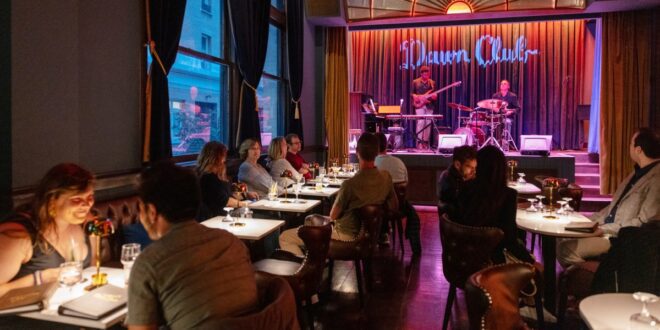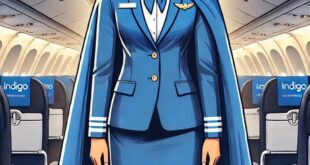Can roller disco, light shows, and winter wonderland displays save Downtown San Francisco? The answer is yes, according to City Hall, which is backing these initiatives with funding. The Office of Economic and Workforce Development has started issuing grants to support arts and entertainment activities in Downtown as part of Mayor London Breed’s vision to create an Arts, Culture, and Entertainment Zone, also known as ACE. This initiative aims to provide fee and tax relief, streamlined permits, marketing support, and incentives for existing businesses and new arts and culture establishments.
The strategy is a key component of the city’s “Roadmap to Downtown San Francisco’s Future,” an effort to revitalize the economic and cultural center of the city, which has been hit hard by underused office buildings and empty storefronts. While the ideas are exciting, there is a lack of specific details on how to achieve them. After six months, the boundaries of the ACE zone have yet to be defined, and progress toward streamlining permits and reducing fees has been minimal. Business owners are expressing the urgent need for these improvements.
Moreover, it remains unclear how these strategies will work across different neighborhoods with diverse challenges. From an exodus of office workers in the Financial District to smash-and-grab thefts in Union Square and open-air drug markets in the Tenderloin and Mid-Market neighborhoods, each area has its own set of obstacles. The process will undoubtedly take time, given the involvement of numerous stakeholders who all want a say in shaping the ACE Zones.
Despite these challenges, city officials are finding hope in the recent resurgence of tourism in Downtown San Francisco. Union Square, the city’s upscale shopping and hotel district, has seen a 22% increase in foot traffic compared to last year. Visitor spending is expected to continue growing, with a report by San Francisco Travel projecting higher tourism-generated fees and tax revenues for 2023. Nightlife and entertainment have played a significant role in driving this positive trend.
Notably, the recent series of final concerts by Dead & Company, a Grateful Dead spinoff band, generated an estimated $30.9 million in revenue and brought in significant hotel accommodations. The Beacon Grand Hotel near Union Square witnessed a surge in foot traffic, and the average hotel occupancy rates skyrocketed to 90% during the concert series weekend. This is a stark contrast to the 8% occupancy rate experienced at the peak of the pandemic. One-off events like the 125th anniversary of the Ferry Building and pop-up concerts by Sofar Sounds have also attracted crowds and boosted spending in the area.
However, it is important to recognize that while tourism plays a part in revitalizing Downtown San Francisco, it cannot solve all the area’s problems. Local business owners, many of whom are struggling to stay afloat, highlight the need for comprehensive solutions. While some establishments have benefited from the recent influx of visitors, others continue to suffer. The rise of remote work has drastically impacted the economy, leading to a decline in happy hour crowds and negatively affecting certain businesses.
Business owners like Brian Sheehy, who owns 14 bars across the city, emphasize the importance of saving existing establishments rather than focusing solely on new ones. Sheehy, who has been waiting for an outdoor seating permit since November, echoes the frustrations of small business owners who face excessive red tape imposed by the city government. Reforms such as allowing bars to stay open past 2 a.m. and selling alcohol outdoors in designated Entertainment Zones are eagerly anticipated by industry professionals.
With retail and office vacancies exceeding 30% and Downtown San Francisco experiencing one of the slowest recoveries nationally, negative press has further hindered efforts to revive the area. The key is not to add more bars and restaurants, according to Sheehy, but to preserve and support the struggling ones. It is clear that a larger puzzle needs to be pieced together to bring back the vibrancy and diversity that once defined Downtown San Francisco.
Despite the challenges, Downtown San Francisco has the potential to regain its reputation as a bohemian haven for offbeat creatives. Recasting the area as a fun and exciting destination for nightlife and the arts is seen as a step in the right direction. Ben Bleiman, chair of the San Francisco Entertainment Commission and owner of several bars in the city, supports the idea of a central hub that caters to the needs of locals rather than multinational corporations. He urges a focus on the local community and its unique character rather than catering exclusively to corporate interests.
In conclusion, while roller disco, light shows, and winter wonderland displays might not be the sole solution to all of Downtown San Francisco’s problems, they certainly play a part in reviving the area. However, it is crucial to address the specific needs of each neighborhood and to implement comprehensive reforms that support existing businesses. By creating an Arts, Culture, and Entertainment Zone, the city can foster a vibrant and diverse atmosphere while preserving its unique character. It is through a combination of strategic planning, streamlined permits, and support for local businesses that Downtown San Francisco can reclaim its status as a thriving cultural and economic center.
 Mind Uncharted Explore. Discover. Learn.
Mind Uncharted Explore. Discover. Learn.




